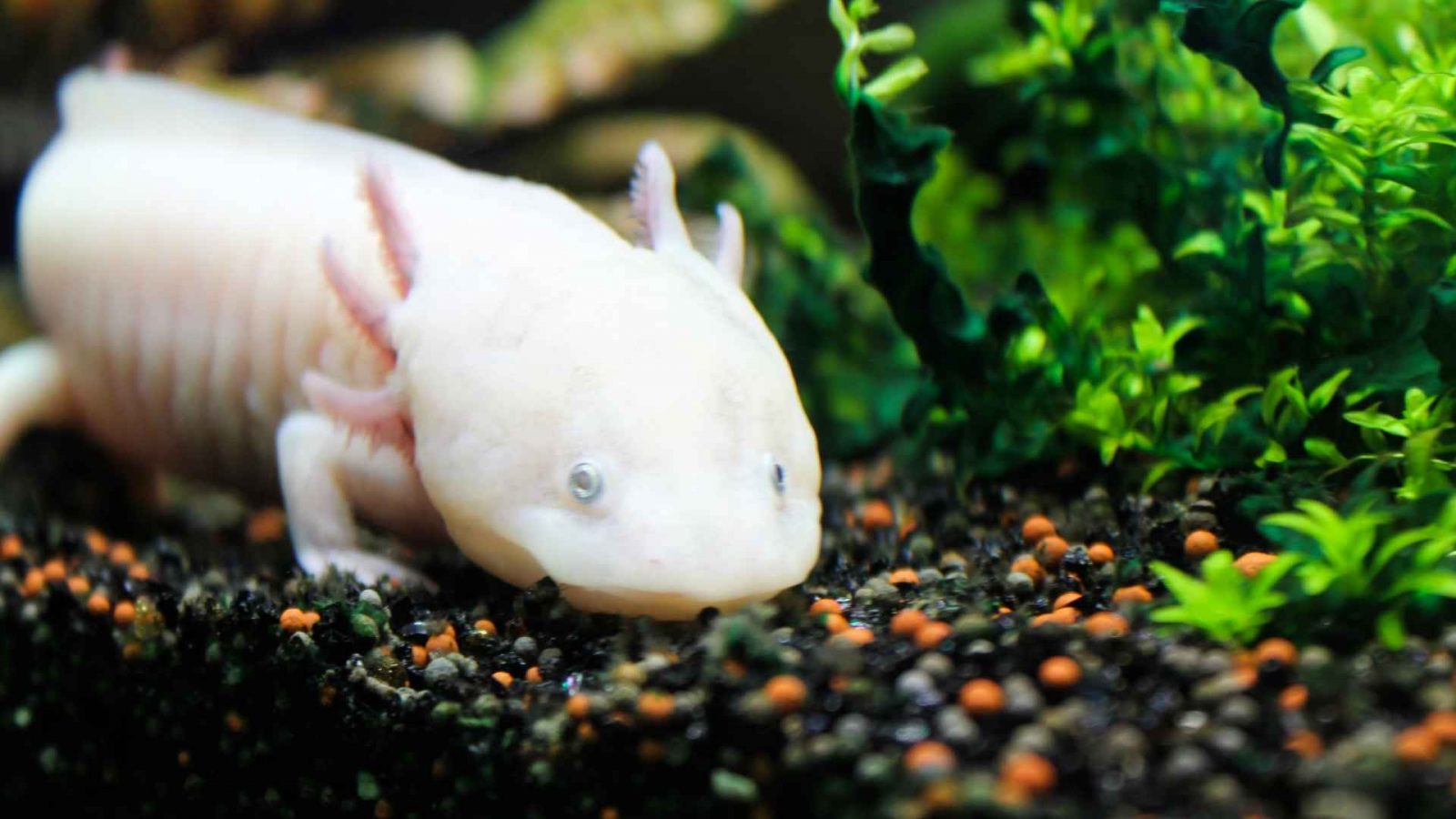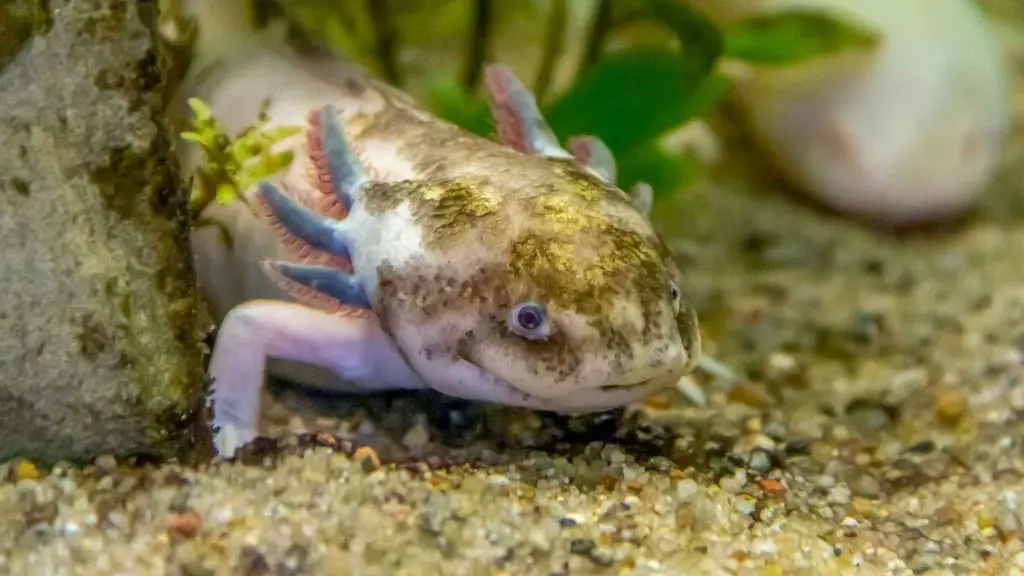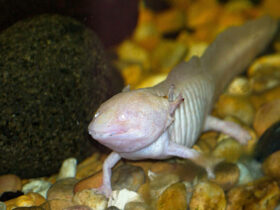
Contents
Do Axolotls Need a Friend? – Introduction

So you’ve decided to become an axolotl parent – congrats! These adorable salamanders with their permanent smiles and feathery gills make amazing pets. But now that you have your axolotl home, you’re wondering if your little buddy needs a companion. After all, most pets are social creatures and enjoy the company of their own kind. Do axolotls need friends too?
Axolotl Tank Mates? Keep with Fish?: https://m.youtube.com/watch?v=Po5Pz067nik&pp=ygUaRG8gQXhvbG90bHMgTmVlZCBhIEZyaWVuZD8%3D
Do Axolotls Need a Friend? the Pros and Cons of Housing Axolotls Together
Do axolotls need a friend? It’s a fair question if you want the best for your salamander. Let’s explore the pros and cons of housing axolotls together.
Pros of Housing Axolotls Together
Axolotls are social creatures and can enjoy the companionship of others. When kept together from an early age, axolotls can form close bonds and even display affectionate behaviors toward one another like nudging and tail grabbing. Having a companion can help alleviate boredom and encourage natural behaviors.
Cons of Housing Axolotls Together
There are some risks to housing axolotls together to be aware of:
•Aggression: Axolotls may become territorial or aggressive toward one another, especially if they are different sizes or ages. Fights can lead to injury or stress. It’s best to house axolotls of the same sex and similar size together.
•Competing for food: Axolotls have a strong feeding response and may compete aggressively for food. You’ll need to provide plenty of food and space to prevent competition.
•Transmission of disease: Housing axolotls together makes it easier for diseases and parasites to spread between them. Quarantining new axolotls before introducing them is recommended.
•Breeding: If you house male and female axolotls together, you may end up with eggs or larvae, even if breeding was not your intention. Separate the sexes to prevent unwanted breeding.
•Messier habitat: More axolotls means more waste and a faster buildup of nitrates. You’ll need to perform more frequent water changes to keep conditions healthy for your pets.
In the end, whether or not to house your axolotls together depends on your ability to properly care for them and prevent potential issues. If done right, axolotls can make delightful companions for each other, but they can also thrive on their own with interaction and enrichment from their owner. The choice is up to you!
How to Choose a Companion for Your Axolotl
So you’ve decided your axolotl could use a buddy. Great! Axolotls are social creatures and can benefit from companionship. But choosing a companion requires some thought.
Consider age and size
Make sure any potential companion is close in age, size, and development to your axolotl. Large age or size differences can lead to dominance behavior, stress, and even physical harm.
Get the same species
Only consider other axolotls as companions. Different amphibian species may have different habitat, temperature, and diet requirements and could become aggressive or prey on each other.
Quarantine new arrivals
Always quarantine any new axolotl in a separate tank for at least 2-4 weeks before introducing them. This ensures the new axolotl is healthy and gives them time to become accustomed to similar water conditions and diet.
Introduce in a neutral space
When it’s time for them to meet, do so in a shallow, bare bottom tub or tank that neither animal associates as their territory. Watch them closely for any signs of aggression or fear for at least 30-60 minutes before moving them into a main enclosure.
Provide plenty of space and hides
Even compatible axolotls will need their own space. Provide multiple hides, plants, tubes or other decor that each axolotl can claim as their own territory. This gives them opportunities to get away from each other if they want to.
With the proper introduction and environment, a companion axolotl can provide beneficial social interaction and enrichment for your pet. But always put the health, safety, and wellbeing of your axolotls first. If companionship isn’t working out, you may need to consider keeping them separate. The most important thing is that your axolotls are happy and thriving.
Introducing Axolotls to One Another: Things to Keep in Mind
So you’ve decided to get your axolotl a companion. That’s great that you want to enrich your axolotl’s life with social interaction and play. However, introducing axolotls to one another requires careful consideration. Some key things to keep in mind:
Age Matters
It’s best to introduce axolotls of similar size and age. Large size differences can lead to bullying or even predation. Axolotls less than 5-6 inches long should not be housed together, as they are still developing their limbs and gills, making them vulnerable to injury from boisterous tankmates.
Opposite Sex?
Unless you plan to breed axolotls, house only same-sex individuals together. Axolotls can breed as early as 6-12 months of age, so you’ll want to avoid unexpected eggs or offspring. Females in particular may become egg-bound if a male is present, which can be life-threatening.
Tank Size
Provide plenty of space for multiple axolotls. For two adults, a 20 gallon long aquarium is a good minimum size. This gives each axolotl room to swim freely and establish their own territory. Overcrowding can lead to stress, aggression, and poor water quality.
Hideouts and Perches
Include multiple hiding spots, plants, tubes, and perches at different levels in the tank. This gives axolotls spaces to get away from each other if they want to, while also providing enrichment. Watch to ensure all axolotls are able to access food and hiding spots.
Monitor Closely
Observe your axolotls closely, especially at first. Look for any signs of stress or aggression like chasing, biting, or lack of appetite. Be prepared to separate axolotls if needed. With time and patience, many axolotls can become quite social and enjoy each other’s company, but their wellbeing should always come first.
Following these tips will help ensure a successful introduction between your axolotls so they can live together happily. But go slowly, be attentive to their needs, and don’t hesitate to make changes if things aren’t working out. The most important thing is keeping your axolotls healthy, safe and stress-free.
Same-Sex Pairings: Can Two Male or Two Female Axolotls Live Together?
When it comes to companionship, same-sex pairings of axolotls can work well. Two males or two females are less likely to breed, so you don’t have to worry about unwanted eggs or offspring. However, there are a few things to keep in mind.
Territoriality
Male axolotls, in particular, can be territorial towards each other. They may nip at each other’s gills or limbs to assert dominance. To prevent aggression, provide plenty of hiding spots, plants, and other decorations in the tank so each axolotl can have their own space. Also, a larger tank, at least 20 gallons, gives them more room to avoid confrontation.
Different Personalities
Even axolotls of the same sex may not always get along. Each axolotl has its own unique personality, temperament and preferences. Some may be more social and active, while others prefer solitude and resting. Look for axolotls with similar activity levels and demeanors to increase the chance of compatibility.
Monitor Closely
When first introducing a same-sex companion, closely supervise their interactions. Look for any signs of stress or aggression like rapid gill movement, limb nipping, or chasing and separate immediately if needed. It can take days or even weeks for some axolotls to become accustomed to each other. Go slowly through the introduction process and be ready to house them separately again if issues continue.
While companionship between two axolotls of the same sex can work, there is no guarantee. Closely monitor them, especially at first, provide a spacious habitat, and be prepared to separate them if aggression, stress or other issues arise. Every axolotl has its own personality, so take the time to find a good match with a similar temperament. With the proper precautions taken, two male or two female axolotls can make suitable tankmates. But there needs to be no doubt that your axolotls’ well-being and happiness come before companionship.
FAQ: Do Axolotls Need a Friend?
Many axolotl owners wonder if their salamander would enjoy the company of another axolotl. While axolotls are not inherently social animals, some companionship can be enriching for them. However, there are a few things to consider before getting your axolotl a friend.
Do Axolotls Bond With Each Other?
Axolotls do not form strong bonds or social connections with other axolotls. They are primarily solitary animals and do not travel together in the wild. While axolotls can live together peacefully, they do not become attached or reliant on one another. Some owners have noticed that their axolotls seem to enjoy swimming and interacting together at times, but they do not need the companionship of another axolotl to be happy and healthy.
Can Axolotls Live Together?
Yes, axolotls can live together in the same tank, but there are some requirements to keep in mind:
Provide extra space. Axolotls produce a lot of waste, so a larger tank is needed to house multiple axolotls. Aim for at least 20 gallons per axolotl.
Separate genders. Unless you intend to breed axolotls, house only males or only females together. Mixing genders could result in unwanted breeding.
Quarantine new axolotls. Any new axolotl should be quarantined for at least 2 weeks before adding to a tank with other axolotls. This ensures the new axolotl is healthy and parasite-free before coming into contact with other axolotls.
Add axolotls simultaneously. Adding new axolotls to an already established tank could lead to aggression or stress. It is best to acquire multiple axolotls at once and introduce them to a new tank together.
Provide hiding spots. Having multiple hiding spots, plants, tubes, and other decor gives axolotls their own space to get away from each other when desired. This can help prevent aggression or stress.
Monitor closely. Always closely monitor axolotls living together to ensure there are no signs of aggression, stress or illness. Be prepared to separate axolotls if necessary.
While axolotl companionship is possible, it does require extra care and responsibility. If you do want to get your axolotl a friend, do plenty of research to ensure you can properly care for multiple axolotls. But don’t feel that your axolotl necessarily needs a companion to be happy – a solitary axolotl can live a full and enriching life with a caring owner like you!
Conclusion
So, what’s the verdict—do axolotls need a friend or not? As it turns out, axolotls can live perfectly happy and healthy lives alone. While they may be social creatures, they are not necessarily social in the way humans are and do not require companionship or bonding with other axolotls. However, that doesn’t mean that having a friend won’t enrich an axolotl’s life or bring you more enjoyment as an owner. If you do choose to get your axolotl a companion, do plenty of research on proper introductions and housing to ensure they live together happily.
At the end of the day, whether your axolotl lives alone or has a roommate is up to you—just make the choice that allows your little salamander to thrive and brings you the most fulfillment as a pet owner. The most important thing is giving your axolotl a safe, enriching and happy life.
More Links:
What Do Axolotls Drink? – Staying Hydrated: https://adoptanim.com/what-do-axolotls-drink/
Is It OK To Touch Axolotl? A Guide to Handling Axolotls in ’23! :https://adoptanim.com/is-it-ok-to-touch-axolotl/





Leave a Reply